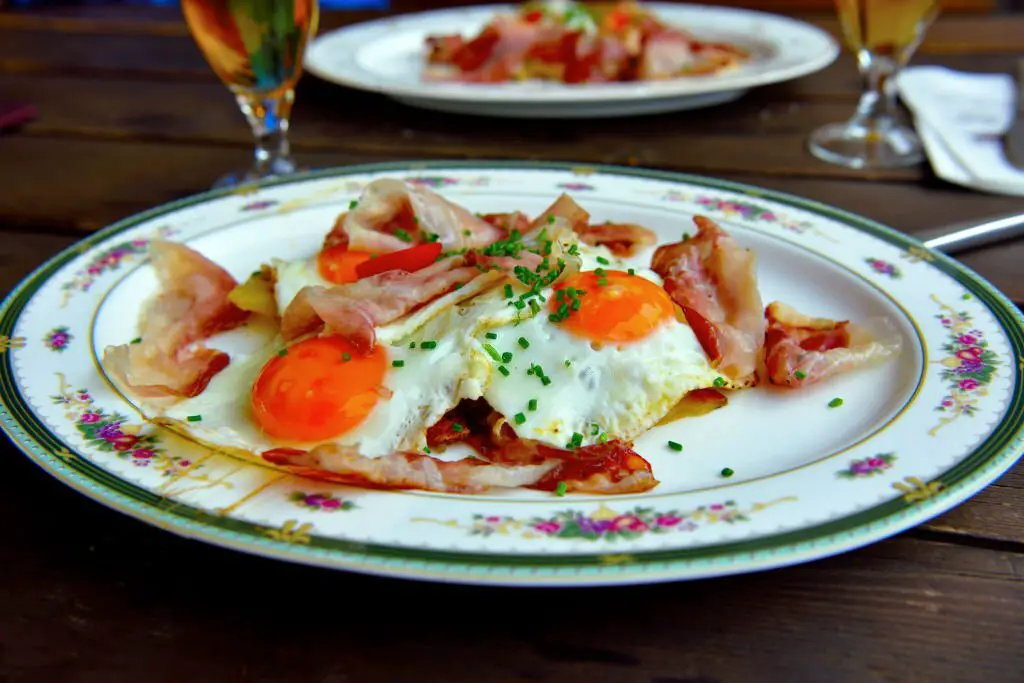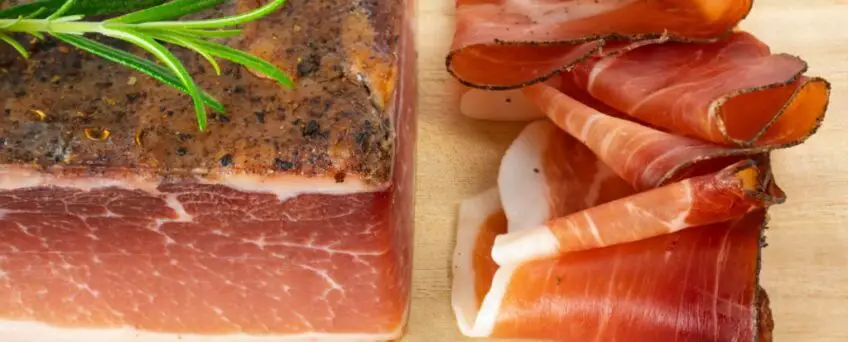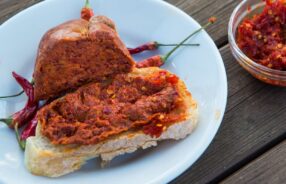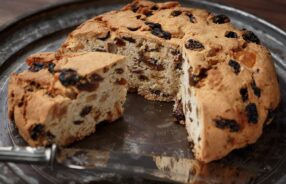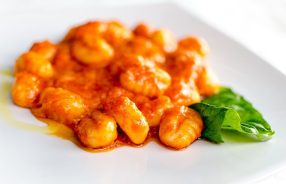Origins And Uses Of Speck
Speck is a smoky, salt-cured, pork meat. It has a long history, going back hundreds of years in the northern mountains of Italy.
Speck is a type of salami from Alto Adige, made from pork leg that is similar to prosciutto crudo, but with a smoky flavor. However, unlike prosciutto Crudo, the bone is removed from the meat before the piece is salted, smoked “cold” in special rooms at a maximum temperature of 20°C (68°F), and cured by following the local traditional curing methods.

The word speck comes from the German word “spek”, which means “thick” and was first introduced in the common language sometime in the 1700s.
The Speck Alto Adige Consortium was founded in 1992 and speck was awarded the IGP (“Indicazione Geografica Protetta”) designation in 1996.
Speck has an outer rind that is a characteristic brown color, however, it shouldn’t have any kind of mold to it.
The fragrance of fresh cut speck is light and smoky while the flavor, on the other hand, is mild with subtle nutty and peppery notes. Speck is never overly salty because of its low salt content compared to other salt-cured meats.
If you will be using the speck cubed or in strips to put in a pasta sauce, then you can simply cut with a very sharp knife, making sure to remove the top rind layer before cutting vertically. Each strip of speck should have both the dark red and pink/white stripes present.
How and where is speck made?
Speck with the IGP label can only be made in a specific geographical region in Tyrol, and strict guidelines must be followed during production. Here are the steps required:
The raw material is selected, consisting of lean, firm pork legs from approved farms. Frozen meat and imported meat is not allowed. The meat is branded so that the product can be traced back to its origin.
- The cuts are covered with salt, pepper, and other spices such as bay leaves, juniper, and rosemary. Other approved spices are garlic, cumin, and coriander, and producers have some flexibility in their “recipe” so they can personalize their production.
- The cuts are “dry cured” for about three weeks, turning several times to allow for even brine (salt) absorption. There is a limit to the amount of salt the final product can have, so it is controlled during this phase.
- After brining, the speck is smoked at a maximum of 20°C with beech wood to add a light, smoky flavor.
- The cuts are then placed in cool, well-ventilated rooms for about two weeks to air dry further. The speck loses about a third of its initial weight and acquires the typical texture and flavor by the end of this process.
Sliced thin speck is great as a snack or in a sandwich. You can add it to a meat and cheese platter, or use it to make pasta sauce.
